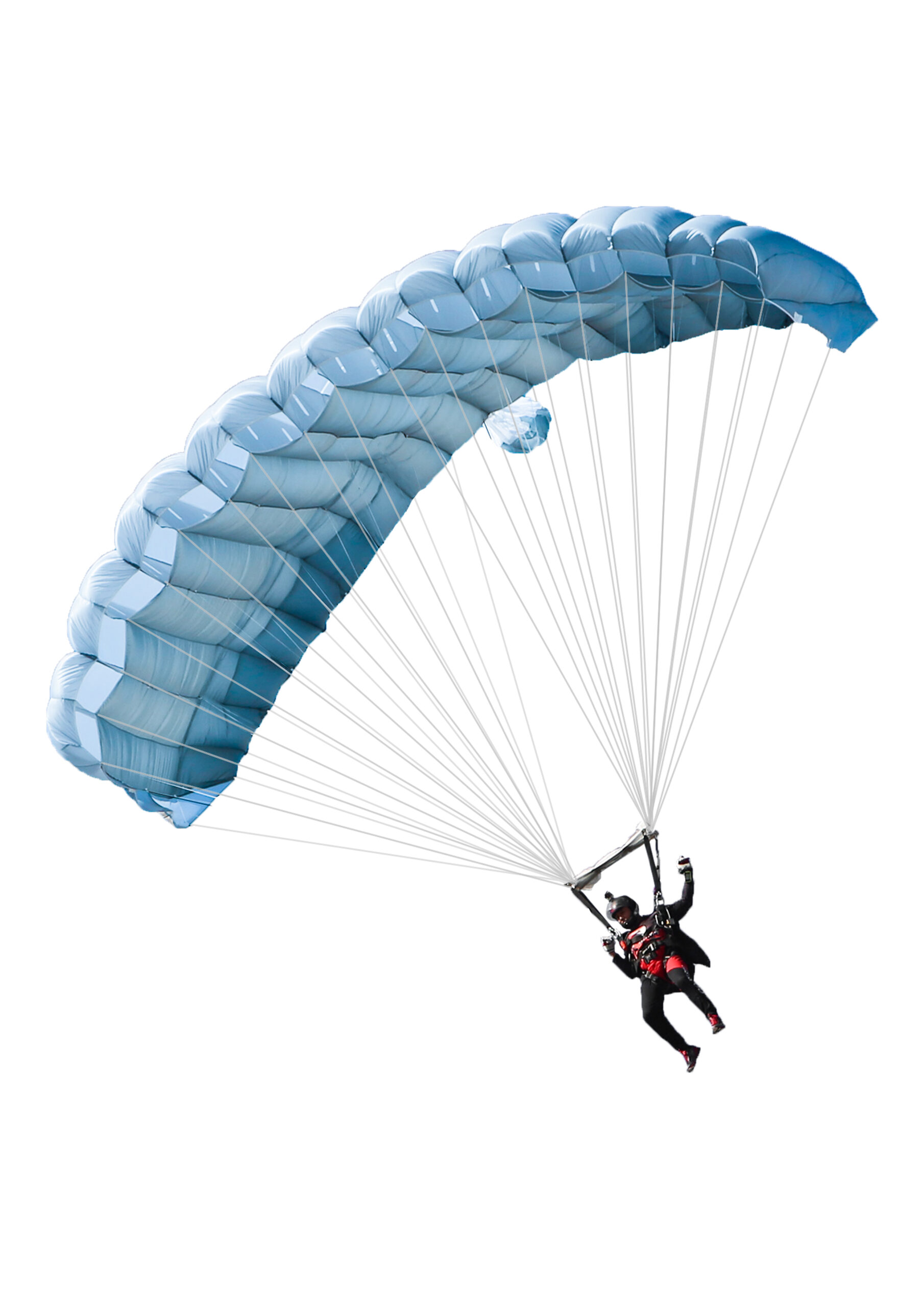You are in the right place if you are a parachute enthusiast curious about parachutes. Many agricultural drone manufacturing companies in India also manufacture different types of parachutes. Before using a parachute in real life, we should know the process behind it. Without any further delay, let us break down the process for you.
How Does A Parachute Work?
A parachute works by pushing air into the front of it, creating a wing-shaped structure underneath which the canopy pilot can navigate. To control the parachute, the pilot pulls on steering lines, altering the wing’s shape, initiating turns, or adjusting the rate of descent. Unlike the older round parachutes, modern skydiving parachutes have a rectangular shape, providing skydivers with increased control. With these rectangular parachutes, skydivers can execute turns, adjust their descent speed, level out their glide, and achieve more precise landings.
How Does A Parachute Fly?
Parachutes are like semi-rigid wings, solid during flight, allowing skydivers to bump them against each other or even walk on top in canopy relative work (CRW). When viewed from the front, parachutes have seven or nine cells, separate chambers that catch air and collectively form the wing. The open front of each cell lets air enter, and as the parachute moves forward, the air is pushed in through the front, filling the cells and giving the parachute its shape. This design is why modern parachutes are also called ‘ram-air parachutes.
How Does A Parachute Open?
The key to steering a parachute effectively is ensuring it opens correctly initially. Parachutes are packed with their cells pointing forward in their containers. When the parachute is deployed, air can quickly rush in. Small differences in packing may lead to slightly off-heading openings, but the parachute’s design ensures it always flies with the front facing forward.
How Does A Parachute Land?
When skydivers approach the landing, they utilise the steering toggles to slow down the parachute’s descent for a gentle touchdown. They simultaneously pull down on both toggles in a controlled manoeuvre known as ‘flaring.’ This action lowers the back of the parachute, flattening it out and decreasing the rate of descent. Experienced skydivers typically experience a soft step forward during the landing, and afterwards, the parachute collapses to the ground as the air stops rushing into it. Start your adventure with OEFHZ, your trusted partner for all things parachuting. As enthusiasts, we understand the thrill and curiosity surrounding the parachute world. Our commitment to quality and safety ensures that we manufacture each parachute. Whether you’re an experienced skydiver or just starting your journey, our parachutes are designed to deliver optimal performance and control. Explore the skies confidently with OEFHZ.




